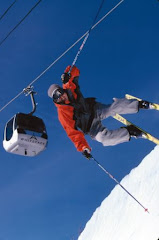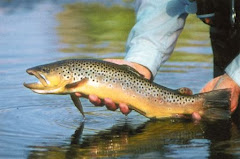CROWN POINT, N.Y. --- Beginning Saturday, May 9, master bird bander Mike Peterson will again begin banding migrating birds that pass through the Crown Point, N.Y. area on the shore of Lake Champlain. The program is a well-established and indispensable technique for studying the movement, survival and behavior of birds.
Bird banding has been used for more than 100 years to keep track of the activities of wild birds. Banding involves placing a metal or plastic band around the leg of a wild bird and then releasing it back into the wild. If the bird is recovered, either dead or alive, at a future time, the information is sent to the original bander. In this way, scientists can find out how far birds travel how long they live, where they spend their winters and whether the species populations are rising or falling.
“Most of the birds that we recover travel along the Atlantic Seaboard,” said Peterson. “Some of the birds will travel between Canada and the Caribbean Islands before returning to Crown Point.”
The Bird Conservation Area is located on the grounds of the Crown Point State Historic Site, at the tip of Crown Point peninsula, just south of the bridge to Vermont. Jutting northward into Lake Champlain, the peninsula serves as a migrant trap in spring, concentrating waves of northbound birds in thickets west of the British fort. The State Historic Site has also been designated as an Important Bird Area (IBA) by the National Audubon Society.
Over 200 bird species have been observed at the Crown Point BCA, with as many as 27 different species of colorful warblers possible during May. Since the station opened in 1976, almost 15, 000 birds and 98 species have been banded. “When we open the nets in a couple of weeks, I expect that we’ll reach 15,000 birds,” added Peterson.
“This is a great program for groups, schools, scouts, seniors and inter-city kids,” remarked Peterson. “They release a bird, but before they do, we take a photo of them with their bird and they also get a certificate about their bird. Plus, we notify them if their bird comes back. Some of the people who have banded birds have received certificates year after year, some for as many as five to nine years in a row.”
Today, band colors and the placement of bands identify countries and other types of bird markers are fixed to bills, webbed feet, necks, tails and wings. Dyes are used on feathers and radio transmitters are used to track birds from day to day. Some markers are designed to wear off in time, while others are meant to be permanent.
For more information, on the May 9-24 program, please contact Mr. Peterson of the Crown Point Banding Association at jmcp7@juno.com, or by phone at 518.873.2052.
Tuesday, April 21, 2009
Subscribe to:
Post Comments (Atom)




No comments:
Post a Comment